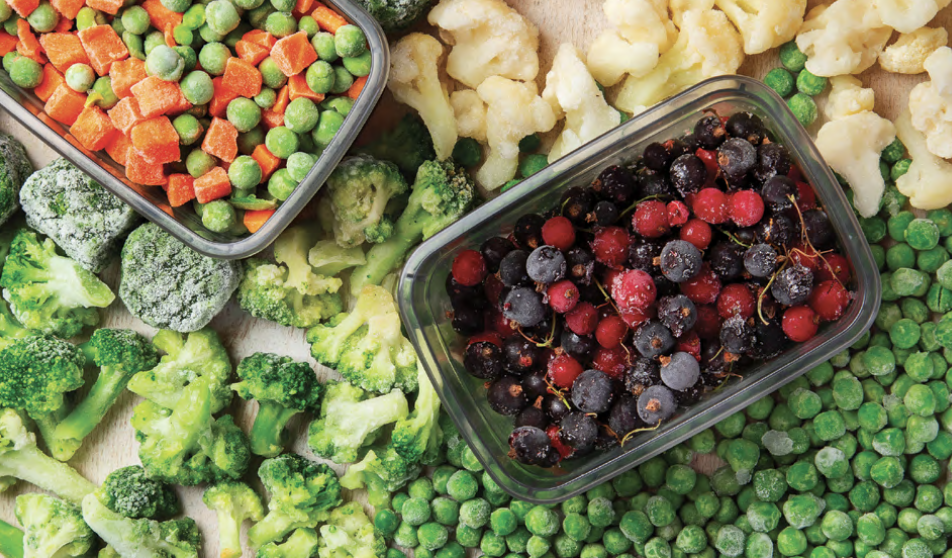By Isabelle Huot
At this time of year, fresh fruits and vegetables are harder to find and fairly expensive. Is it worth switching to frozen? Definitely—the pluses outweigh the minuses.
PROS
Economy: Frozen fruits and vegetables are often less expensive than fresh. At the grocery store, compare prices by weight to make the best choices. Another tip: take advantage of sales and stock your freezer.
Practicality: They are already washed, cut up, and ready for cooking.
Convenience: Many vegetables are blanched before being frozen, which saves you time. Foods that have been blanched cook more quickly than raw foods.
Nutrition: Frozen foods are harvested when ripe and flash-frozen after being washed and, with some vegetables, blanched. They therefore have excellent nutritional value that is comparable to that of fresh products and better than that of canned foods, which lose vitamins when they’re cooked before being canned and some minerals after soaking in water or syrup.
Availability: They are plentiful. Supermarkets have a wide selection of frozen foods all year long.
The Environment: By using only the amount of fruits or vegetables you need, you reduce food waste. Any extras will keep for several months in the freezer.
Versatility: Frozen vegetables can be used in all kinds of recipes, such as sauces, soups, stir-fries, stews, quiches, and omelettes. Frozen fruits are perfect in crisps, muffins, jams, and even as a topping for yogourt or oatmeal.
CONS
Packaging: Unlike many fresh products, frozen fruits and vegetables are packaged, creating more material for the landfill.
Texture: There’s nothing like a freshly picked fruit or vegetable. Because frozen fruits and vegetables are not as crunchy and flavourful, they are sometimes less pleasing to the senses.
4 Tips for Getting the Most From Frozen Foods
1. Freeze them properly. To avoid having food dry out or develop freezer burn, make sure that the temperature of your freezer is -18°C (0°F) or less and that the package is tightly sealed.
2. Thaw them properly. Thawing in the fridge, microwaving, or soaking in cold water are all safe ways to bring frozen foods to room temperature. Once that’s done, you can cook them. You can also cook frozen foods in the oven without thawing them first, but the cooking time will be longer.
3. Don’t refreeze them. If you want to refreeze previously frozen fruits or vegetables, it’s best to cook them first.
4. Cook them properly. To preserve the nutritional value of frozen fruits and vegetables, avoid overcooking them. Extended cooking, at high temperatures or in a lot of water, results in a loss of nutrients. Choose quick-cooking methods and those that need little water (like steaming or microwaving). Recipes that include using the cooking water, such as soups and stews, are also good options to preserve as many nutrients as possible.
Isabelle Huot holds a Ph.D. in nutrition.






